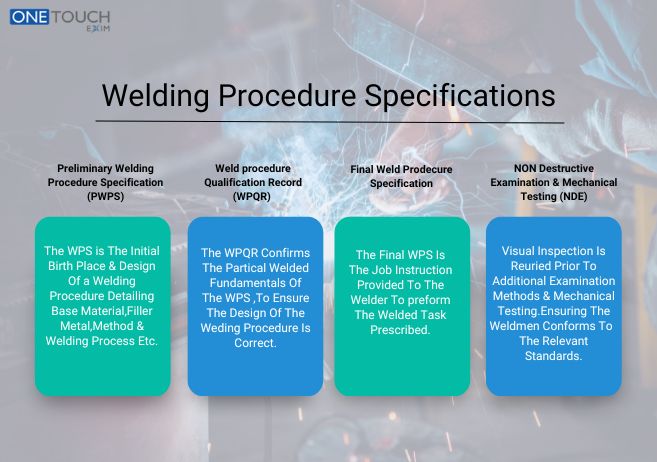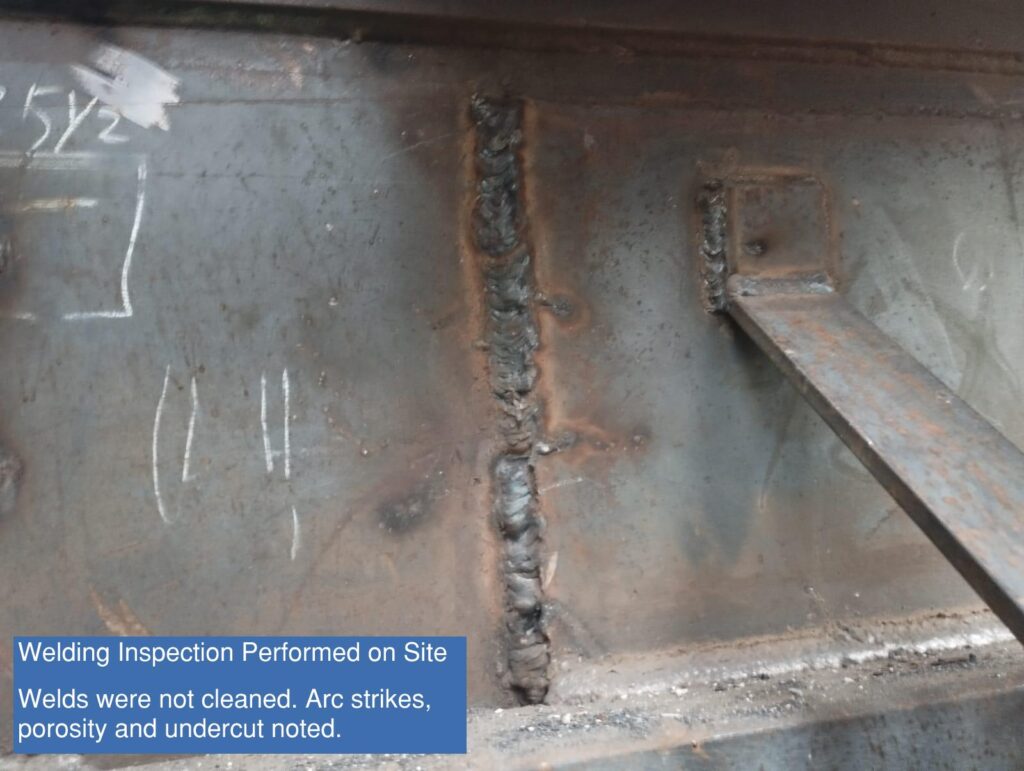How Welding Inspection Racine Ensures Security and Conformity
How Welding Inspection Racine Ensures Security and Conformity
Blog Article
Cutting-edge Techniques to Fillet Weld Inspection and Screening: Enhancing Weld Quality and Conformity Requirements
In the world of welding, the high quality and integrity of fillet welds play a vital function in ensuring the structural soundness and integrity of numerous industrial components. With the consistent drive for improved performance and compliance with rigid criteria, the expedition of cutting-edge methods to fillet weld examination and screening has actually come to be critical. As sectors progress, the standard techniques might no much longer be sufficient in satisfying the demands of contemporary welding applications. By welcoming sophisticated modern technologies and approaches, a new horizon of opportunities emerges in the world of weld quality evaluation and adherence to compliance requirements.
Advanced Non-Destructive Screening Approaches
Making use of modern modern technologies, advanced non-destructive testing methods play an essential role in making certain the integrity and top quality of fillet welds. These techniques, such as phased variety ultrasonic screening (PAUT) and magnetic fragment screening (MPT), deal in-depth insights into the weld's interior structure without creating any type of damages to the material. PAUT, for circumstances, makes use of multiple ultrasonic aspects to evaluate the weld from various angles, offering a thorough visualization of potential problems like lack of combination or splits.
Similarly, MPT is efficient in finding surface-breaking defects by applying an electromagnetic field and iron bits to the weld location. This approach is specifically useful for determining stoppages that might compromise the weld's strength. By utilizing these sophisticated non-destructive screening strategies, weld assessors can properly analyze the quality of fillet welds, making certain compliance with industry standards and guidelines. The capability to find imperfections early on not only enhances weld quality but also prevents costly rework or failures in architectural honesty, underlining the significance of these innovative screening approaches in welding evaluations.
Robotics and Automation in Inspection
The assimilation of robotics and automation has actually reinvented the examination procedure for fillet welds, improving efficiency and accuracy in top quality assessment. Robotics offer specific control and repeatability in checking welds, guaranteeing consistent and trusted outcomes. Automated systems can be configured to follow details examination courses, guaranteeing thorough insurance coverage of welds and minimizing the risk of human mistake.
Robotic examination systems geared up with innovative sensors can discover and gauge weld functions with high accuracy, providing comprehensive data for analysis. These systems can recognize defects such as fractures, absence of combination, and porosity, making it possible for prompt restorative actions to be taken. Furthermore, robotics and automation enable for real-time data collection and analysis, providing prompt feedback to drivers and helping with fast decision-making procedures.
In addition, making use of robotics and automation in fillet weld inspection improves general efficiency by lowering examination times and increasing evaluation throughput. By improving the inspection process, producers can make certain weld high quality and compliance standards are met successfully, ultimately leading to set you back savings and improved item high quality.
Utilizing Expert System for Analysis
Artificial knowledge plays an essential function in improving the performance and precision of evaluation in fillet weld evaluation processes. AI formulas can quickly process huge amounts of data from weld inspections, identifying flaws or variances that might be testing to identify with the nude eye - Welding Inspection Racine.
Additionally, AI systems can gain from previous evaluation information, this content continually boosting their capability to recognize possible flaws and deviations in fillet welds. This flexible learning ability boosts the total quality assurance process, minimizing the likelihood of human mistake and guaranteeing that welds fulfill the called for standards. By integrating fabricated intelligence into fillet weld evaluation, sectors can attain higher levels of performance, uniformity, and conformity in their evaluation techniques.
Portable Tools for On-Site Assessment
 Enhancing area evaluation effectiveness, the fostering of mobile devices changes on-site evaluation procedures for fillet welds. These devices provide flexibility and convenience, enabling assessors to conduct complete examinations in numerous areas, including remote or difficult atmospheres. Portable devices such as ultrasonic screening gadgets, magnetic bit inspection devices, and digital radiography systems supply real-time information and high-resolution imaging abilities, allowing quick decision-making and immediate feedback on weld quality.
Enhancing area evaluation effectiveness, the fostering of mobile devices changes on-site evaluation procedures for fillet welds. These devices provide flexibility and convenience, enabling assessors to conduct complete examinations in numerous areas, including remote or difficult atmospheres. Portable devices such as ultrasonic screening gadgets, magnetic bit inspection devices, and digital radiography systems supply real-time information and high-resolution imaging abilities, allowing quick decision-making and immediate feedback on weld quality.One substantial benefit of mobile tools is their ability to streamline inspection treatments, lowering downtime and boosting general productivity. Inspectors can conveniently move these devices to different job websites, getting rid of the requirement for carrying heavy equipment or elements to off-site facilities. In addition, the transportability of these tools promotes cost-effectiveness by decreasing transport expenses and increasing assessment timelines.
Furthermore, using mobile tools for on-site examination promotes proactive top quality control procedures, as examiners can promptly recognize and deal with any prospective welding defects or disparities. By incorporating these cutting-edge innovations right into on-site assessment practices, welding experts see this can ensure conformity with industry requirements and enhance weld top quality, ultimately causing improved architectural integrity and safety and security in various welding applications.
Combination of Data Monitoring Solution
Having actually enhanced on-site examination processes via the utilization of portable devices, the next phase entails the seamless combination of information management systems to additionally boost effectiveness and information analysis abilities in fillet weld inspection and testing. Welding Inspection Racine. By integrating information monitoring systems into the evaluation procedure, companies can streamline data collection, storage, and analysis. This assimilation permits real-time tracking of weld high quality, prompt identification of problems, and timely decision-making to fix any issues that may occur during the examination procedure
The combination of data administration systems allows seamless interaction between different stakeholders entailed in the evaluation procedure, fostering cooperation and enhancing overall top quality control steps. Inevitably, the integration of information management systems serves to boost the standards of fillet weld assessment and testing, making sure conformity with industry guidelines and boosting weld quality.
Final Thought
Finally, innovative strategies to fillet weld inspection and testing have actually significantly improved weld top quality and conformity standards. Advanced non-destructive testing techniques, robotics, automation, artificial intelligence, portable devices, and data management systems have reinvented the means weld inspections are conducted. By using these innovations, sectors can make certain that welds meet the required high quality requirements and guidelines, eventually boosting total performance and safety and security in welding procedures.

By using these here innovative non-destructive screening strategies, weld assessors can precisely examine the high quality of fillet welds, making sure conformity with market requirements and guidelines. Portable tools such as ultrasonic testing tools, magnetic fragment examination tools, and digital radiography systems supply real-time data and high-resolution imaging capabilities, enabling fast decision-making and instant comments on weld quality.
Having actually maximized on-site examination procedures through the utilization of mobile devices, the following phase involves the smooth combination of data management systems to further boost performance and data analysis capacities in fillet weld assessment and testing (Welding Inspection Racine). Ultimately, the assimilation of data management systems offers to raise the standards of fillet weld inspection and screening, ensuring conformity with market regulations and boosting weld high quality
 In final thought, innovative strategies to fillet weld examination and testing have dramatically improved weld quality and compliance criteria.
In final thought, innovative strategies to fillet weld examination and testing have dramatically improved weld quality and compliance criteria.Report this page